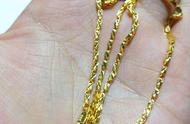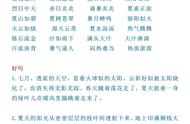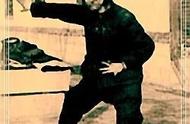虽然Namei勾勒出了二语词汇在心理词库中的基本发展特征, 由于对联想反应所采用的刺激词的词性或词类在研究中并没有明确划分, 对相应的反应进行分类也没有统一的标准,因此,这样的二语词库构建模式还有待于更多研究结果的证实。

九、词汇联想中未能解决的问题和争议
词汇联想作为一种简便、快捷、操作性强的测试和实验手段, 在心理语言学领域和应用语言学领域已经得到众多的关注。通过词汇联想得到的结果可以分析和揭示学习者心理词汇的联结特点,从而诊断出词汇习得中存在的问题,更好地指导外语教学,也为教材的编写及词典的编撰提供有价值的反馈信息。不可否认, 目前的相关研究在二语词汇习得领域仍在起步阶段, 存在的问题以及对研究结果的争议也不少。主要有以下几个方面:
1)对二语心理词库的构建模式存在争议。是与一语不同的语音联结模式为主, 还是与一语相同的语义联结模式为主,各执一端。
2)对纵聚合和横组合反应的变化是否也可以和在一语中的发现一样,作为二语心理词库的发展标志,目前仍不清楚。
3)二语词汇理论模型还不能完全解释词类效应对二语心理词库的构建模式的影响,也没有解释语言独有的搭配或横组合关系在二语学习者心理词库中的构建和表征特征。
4)词汇联想测试在方法上还没有解决选择刺激词和联想反应分类的标准混乱的问题。
十、结语
心理词库是有关词的信息在大脑中的表征(Murphy , 2003)。但这些信息到底是什么,又是以什么样的方式结合在一起, 绝不是一个能简单回答的问题。词汇联想虽然简便易行, 但作为一种科学的研究方法, 仍然需要进一步完善和修正。尽管如此, 联想测试所折射出的词汇知识构建可以反映出二语学习者词汇能力的基本发展特点、对二语词汇深度知识掌握的程度以及与母语者的差异。对二语词汇习得的研究道路漫长,期待更多的研究者做更多更深的探索。

参考文献
Aitchison, J. 1994/ 2003. Words in the Mind: An Introduction to the Mental Lexicon. Oxford: Blackwell Publishing.
Altarriba, J. & K. Mathis. 1997. “Conceptual and lexical development in second language acquisition” .Journal of Memory and Language 36.
Anderson, J. & G. Bower. 1974. Human Associative Memory. Washington: Hemisphere Publishing Corporation Press Division of Wiley.
Anglin, J. 1970. The Growth of Word Meaning. Cambridge, MA: MIT Press.
Ard, J. & S. Gass. 1987. “Lexical constriants on syntactic acquisition”. SSLA 9.
Bialystok, E. 2001. Bilingualism in Development: Language, Literacy, and Cognition. New York: CUP .
Brown, P. 2006. “A small-scale exploration into the relationship between word-association and learners' lexical development”. http:// www.cels.bham.ac.uk/resources/essays/ Brown% 20% Mod% 203.pdf (March - 27 -2008).
Brown, R. & J. Berko. 1960. “Word association and the acquisition of grammar”. Child Development 31/1.
Channel, J. 1990. “Vocabulary acquisition and the mental lexicon”. In J. Tomasczyk & B. Lewandowska-Tomanczyk (eds.). Meaning and Lexicography. Amsterdam: Benjamins.
Chen, H. & C. Ho. 1986. “Development of Stroop interference in Chinese-English bilinguals”. Journal of Experimental Psychology: Learning, Memory, and Cognition 3.
Chen, H. & Y. Leung. 1989. “Patterns of lexical processing in a nonnative language”. Journal of Experimental Psychology: Learning, Memory, and Cognition 15.
Cunningham, L. 1990. “L2 vocabulary: A study of the word association responses of beginning learners of Irish”. M. Phil. Dissertation. University of Dublin.
Deese, J. 1962a. “Form class and the determinants of association”.Journal of Verbal Learning and Verbal Behavior 1.
Deese, J. 1962b. “On the structure of associative meaning”. Psychology Review 69.
Deese, J. 1964. “The associative structure of some common English adjectives”. Journal of Verbal Learning and Verbal Behavior 3.
Deese, J. 1965. The Structure of Associations in Language and Thought. Baltimore: Johns Hopkins University Press.
de Groot, A. 1989. “Representational aspects of word imageability and word frequency as assessed through word association”. Journal of Experimental Psychology: Learning, Memory, and Cognition 15/5.
de Groot, A. 1992. “Determinants of word translations”. Journal of Experimental Psychology: Learning, Memory, and Cognition 18.
de Groot, A. 1993. “Word-type effects in bilingual processing tasks: Support for a mixed-representation system”. In R. Schrender & B. Weltens (eds.).The Bilingual Lexicon. Amsterdam: John Benjamins Publishing Company.
de Groot, A. & R. Keijzer. 2000. “What is hard to learn is easy to forget: The roles of word concreteness, cognate status, and word frequency in foreign-language vocabulary learning and forgetting”. Language Learning 50/1.
de Groot, A. & G. Nas. 1991. “Lexical representation of cognates and non-cognates in compound bilinguals”. Journal of Meaning and Language 30.
de Groot, A. & R. Poot. 1997. “Word translation at three levels of proficiency in a second language: The ubiquitous involvement of conceptual memory”. Language Learning 47.
de Groot, A., L. Dannenburg & J. van Hell.1994.“Forward and backward word translation by bilinguals”. Journal of Memory and Language 33.
Dijkstra, T., H. van Jaasveld & S. ten Brinke.1998. “Interlingual homograph recognition: Effects of task demands and language intermixing”. Bilingualism: Language and Cognition 1.
Dong, Y., S. Gui & B. MacWhinney. 2005. “Shared and separate meanings in the bilingual mental lexicon”. Bilingualism: Language and Cognition 8/3.
Elman, J., E. Bates, M. Johnson, A. Karmiloff-Smith, D. Parisi & K. Plunkett. 1996. Rethinking Innateness: A Connectionist Perspective on Development. Cambridge, MA: MIT Press.
Entwisle, D. 1966. Word Associations of Young Children. Baltimore: John Hopkins University Press.
Entwisle, D., D. Forsyth & R. Muuss. 1964. “The syntagmatic-paradigmatic shift in children's word associations”. Journal of Verbal Learning and Verbal Behavior 3.
Ervin, S. 1961. “Changes with age in the verbal determinants of word association” .The American Journal of Psychology 74/3.
Ervin, S. 1963. “Correlates of associative frequency”. Journal of Verbal Learning and Verbal Behavior 1.
Fitzpatrick, T. 2006. “Habits and rabbits: Word associations and the L2 lexicon”. EUROSLA Yearbook 6.
Fitzpatrick, T. 2007. “Word association patterns: Unpacking the assumptions”. International Journal of Applied Linguistics 17/3.
Forster, K. I. & N. Jiang. 2001. “The nature of the bilingual lexicon: Experiments with the masked priming paradigm”. In J. Nicol (ed.). One Mind, Two Languages: Bilingual Language Processing. Malden, Mass.: Blackwell.
Francis, H. 1972. “Toward an explanation of the syntagmatic-paradigmatic shift”. Child Development 43/3.
Greidanus, T. & L. Nienhuis. 2001. “Testing the quality of word knowledge in a second language by means of word associations: Types of distracters and types of associations”. The Modern Language Journal 85/4.
Gunstone, R. 1980. “Word association and the description of cognitive structure”. Research in Science Education 10/1.
Henriksen, B. 1999. “Three dimensions of vocabulary development”. SSLA 21/2.
Henriksen, B. 2008. “Declarative lexical knowledge”. In D. Albrechtsen, K. Haastrup & B. Henriksen (eds.). Vocabulary and Writing in a First and Second Language: Processes and Development. New York: Palgrave Macmillan.
Herschensohn, J. 2007. Language Development and Age. Cambridge: CUP.
Jiang, N. 2000. “Lexical representation and development in a second language”. Applied Linguistics 21/1.
Jin, Y. 1990. “Effects of concreteness on cross-language priming in lexicaldecisions”. Perceptual and Motor Skills 70.
Jung, C. 1918. Studies in Word Association. London: Heinemann.
Kent, G. & A. Rosanoff.1910. “A study of association in insanity”. The American Journal of Insanity LX VII.
Kolers, P. A. 1963. “Interlingual word associations”. Journal of Verbal Learning and Verbal Behavior 2.
Kroll, J. 1993. “Accessing conceptual representations for words in a second langauge”. In R. Schreuder & B. Weltens (eds.). The Bilingual Lexicon. Amsterdam: John Benjamins.
Kroll, J. & A. de Groot. 1997. “Lexical and conceptual memory in the bilingual: mapping from form to meaning in two languages”. In A. de Groot & J. Kroll (eds.). Tutorials in Bilingualism: Psycholinguistic Perspectives. Mahwah, NJ: Lawrence Erlbaum Associates.
Kroll, J. & A. Sholl. 1992. “Lexical and conceptual memory in fluent and nonfluent bilinguals”. In R. Harris(ed.). Cognitive Processing in Bilinguals. Amsterdam: Elsevier Science Publishers B.V.
Kroll, J. & E. Stewart. 1994. “Category interference in translation and picture naming: Evidence for asymmetric connections between bilingual memory representations”. Journal of Memory and Language 33.
Kroll, J. & G. Sunderman. 2003. “Cognitive processes in second language learners and bilinguals: The development of lexical and conceptual representations”. In C. Doughty & M. Long (eds.). The Handbook of Second Language Acquisition. Malden, Mass: Blackwell.
Kroll, J. & N. Tokowicz. 2001. “The development of conceptual representation for wordsin a second language”. In J. Nicol (ed.). One Mind, Two Languages: Bilingual Language Processing. Malden, Mass.: Blackwell.
Kruse, H., J. Pankhurst & M. Sharwood-Smith. 1987.“A multiple word association probe in second language acquisition research”. SSLA 9.
Lambert, W. & N. Moore. 1966. “Word-association responses: Comparisons of American and French monolinguals with Canadian monolinguals and bilinguals”. Journal of Personality and Social Psychology 3.
Laufer, B. 1989. “A factor of difficulty in vocabulary learning: Deceptive transparency”. In P. Nation & R. Carter (eds.). Vocabulary Acquisition. Amsterdam: Free University Press.
Lotto, D. & A. de Groot. 1998. “Effects of learning method and word type on acquiring vocabulary in an unfamiliar language”. Language Learning 48.
McCarthy, M. 1990. Vocabulary. Oxford: OUP.
McNeill, D. 1966. “A study of word association”. Journal of Verbal Learning and Verbal Behavior 11.
Meara, P. 1978. “Learners' word associations in French”. Interlanguage Studies Bullentin (Utrecht)3/1.
Meara, P. 1982. “Word associations in a foreign language: A report on the Birkbeck Vocabulary Project ”. Nottingham Linguistic Circular 11/2.
Meara, P. 1983. “Word associations in a foreign language”. Nottingham Linguistics Circular 11.
Meara, P. 1984. “The study of lexis in interlanguage”. In A. Davies, A. Howart & C. Criper (eds.). Interlanguage. Edinburgh: Edinburgh University Press.
Meara, P. 1996. “The dimensions of lexical competence”. In G. Brown, K. Malmkjaer & J. Williams (eds.). Performance and Competence in Second Language Acquisition. Cambridge: CUP.
Meara, P. & T. Fitzpatrick. 2000. “Lex30: An improved method of assessing productive vocabulary in an L2”. System 28/1.
Meara, P. & B. Wolter. 2004. “V-Links: Beyond vocabulary depth”. In D. Albrechtsen et al.(eds.). Angles on the English-speaking World: Writing and Vocabulary in Foreign Language Acquisition. Copenhagan: Museum Tusculanum Press.
Miller, G. & C. Fellbaum. 1991. “Semantic networks of English”. Cognition 41.
Murphy, M. L. 2003. Semantic Relations and the Lexicon. Cambridge: CUP.
Namei, S. 2002. “The bilingual lexicon from a developmental perspective: A word association study of Persian-Swedish bilinguals”. Center for Research on Bilingualism, Stockholm University.
Namei, S. 2004. “Bilingual lexical development: A Persian-Swedish word association study”. International Journal of Applied Linguistics 14/3.
Nation, P. 2001. Learning Vocabulary in Another Language. Cambridge: CUP.
Navracsics, J. 2007. “Word classes and the bilingual mental lexicon”. In Z. Lengyel & J. Navracsics(eds.).Second Language Lexical Progresses: Applied Linguistics and Psycholinguistic Perspectives. Clevedon: Multilingual Matters Ltd.
Nissen, H. & B. Henriksen. 2006. “Word class influence on word association test results”. International Journal of Applied Linguistics 16/3.
Orita, M. 2002. “Word associations of Japanese EFL learners and native speakers: Shifts in response type distribution and the associative development of individual words”. Annual Review of English Language Education in Japan.
Paivio, A.1986. Mental Representation: A Dual-Coding Approach. New York: OUP.
Paivio, A. 1991. “Dual coding theory: Retrospect and current status”. Canadian Journal of Psychology 45.
Palermo, D. & J. Jenkins. 1963. Word Association Norms: Grade School through College. Minneapolis: University of Minnesota Press.
Paradis, M. 1997. “The cognitive neuropsychology of bilingualism”. In A.de Groot & J. Kroll (eds.). Tutorials in Bilingualism: Psycholinguistic Perspectives. Mahwah, NJ: Erlbaum.
Peppard. 2007. “Exploring the relationship between word-association and learners' lexical development” .http://www.cels.bham.ac.uk/ resources/essays/Peppard-Mod-2.pdf.(March-28-2008).
Pinker, S. 1995. The Language Instinct. New York: Harper Perennial.
Politzer, R. 1978. “Paradigmatic and syntagmatic associations of first-year French students”. In V. Honsa & M. J. Hardman-de-Bautista (eds.). Papers on Linguistics and Child Language. Ruth Hirsch Weir Memorial Volume. The Hague: Mouton.
Potter, M., K. So, B. von Eckardt & L. Feldman. 1984.“Lexical and conceptual representation in beginning and proficient bilinguals”. Journal of Verbal Learning and Verbal Behavior 23.
Read, J. 1993. “The development of a new measure of L2 vocabulary knowledge”. Language Testing 10/3.
Read, J. 1998. “Validating a test to measure depth of vocabulary knowledge”. In A. Kunnen (ed.). Validation in Language Assessment. Hillsdale, NJ: Erlbaum.
Read, J. 2000. Assessing Vocabulary. Cambridge: CUP.
Richards, C. & R. Schmidt. 2002. Dictionary of Language Teaching & Applied Linguistics (3rdedition). London: Longman.
Richards, J. 1976. “The role of vocabulary teaching”. TESOL Quarterly 10/1.
Riegel, K. & I. Zivian. 1972. “A study of inter-and-intralingual associations in English and German ”. Language Learning 22/1.
Rumelhart, D. & J. McClelland. 1986/1994. “On learning the past tense of English verbs”. In P. Bloom (ed.). Language Acquisition: Core Readings. Cambridge, MA: MIT Press.
Russell, W. & J. Jenkins. 1954. The Complete Minnesota Norms for Responses to 100 Words from the Kent-Rosanoff Test. Minneapolis: Tech. Rept. No.11, University of Minnesota.
Salamoura, A. 2004. “The representation of syntactic information in the bilingual lexicon”. PhD. Dissertation of Research Center of English and Applied Linguistics. Cambridge: University of Cambridge.
Schmitt, N. 1998. “Quantifying word association responses: What is native-like?”. System 26.
Schmitt, N. 2007. Vocabulary in Language Teaching. Cambridge: CUP.
Schmitt, N. & P. Meara. 1997. “Researching vocabulary through a word knowledge framework: Word associations and verbal suffixes”. SSLA 19.
Schonpflug, U. 1997. “Bilingualism and memory”. Paper presented at the International Symposium on Bilingualism. Newcastle upon Tyne, England.
Schwanenflugel, P., C. Akin & W. Luh. 1991. “Context availability and recall of abstract and concrete words”. Memory and Cognition 20.
Sharp, D. & M. Cole. 1972. “Patterns of responding in the word associations of west African children”. Child Development 43/1.
Singleton, D. 1990. The TCD Modern Language Research Project: Objectives, Instruments and Preliminary Results. Dublin: Trinity College, Centre for Language and Communication Studies (CLCS Occasional paper 26), and Alexandria, VA: ERIC Reports ED.
Singleton, D. 1999. Exploring the Second Language Mental Lexicon. Cambridge: CUP.
Sǒderman, T. 1989.“Word associations of foreign language learners and native speakers—A shift in response type and its relevance for a theory of lexical development”. Scandinavian Working Papers on Bilingualism 8.
Sǒderman, T. 1993.“Word associations of foreign language learners and native speakers—Different response types and their relevance to lexical development”. In B. Hammarberg (ed.). Problem, Process, Product in Language Learning—Papers from the Stockholm-Abo Conference. Stockholm University: Department of Linguistics.
Sunderman, G. & J. Kroll. 2006. “First language activation during second language lexical processing”. SSLA 28.
Stevens, A. 1994. Jung: A Very Short Introduction. Oxford: OUP.
Taylor, I. 1976. “Similarity between French and English words—A factor to be considered in bilingual language behavior?”. Journal of Psycholingualistic Research 5.
van Hell, J. & A. de Groot. 1998a. “Conceptual representation in bilingual memroy: Effects of concreteness and cognate status in word association”. Bilingualism: Language and Cognition 1.
van Hell, J. & A. de Groot. 1998b. “Disentangling context availability and concreteness in lexical decision and word translation” .Quarterly Journal of Experimental Psychology 51A .
Vanniarajan, S. 1997. “An interactive model of vocabulary acquisition”. Applied Language Learning 8.
Verhallen, M. & R. Schoonen.1993. “Lexical knowledge of monolingual and bilingual children”. Applied Linguistics 14/4.
Verhallen, M. & R. Schoonen. 1998. “Lexical knowledge in L1 and L2 of third and fifth graders”. Applied Linguistics 19/4.
Weinreich, U. 1953/1968. Language in Contact. The Hague:Mouton, and New York: Linguistic Circle of New York, Publication no.2.
Wesche, M. & T. Paribakht. 1996. “Assessing vocabulary knowledge: Depth vs.breadth”. Canadian Modern Language Review 53.
Wilks, C., P. Meara & B.Wolter. 2005. “A further note on simulating word association behavior in a second language”. Second Language Research 21/4.
Wolter, B. 2001. “Comparing the L1 and L2 mental lexicon: A depth of individual word knowledge model”. SSLA 23/1.
Wolter, B. 2002. “Assessing proficiency through word associations: Is there still hope?”. System 30.
Wolter, B. 2006. “Lexical network structures and L2 vocabulary acquisition: The role of L1 lexical/conceptual knowledge”. Applied Linguistics 27/4.
Woodrow, H. & F. Lowell. 1916. “Children's association frequency tables”. Psychological Monographs 22/5.
Zareva, A. 2007. “Structure of the second language mental lexicon: How does it compare to native speakers' lexical organization?”. Second Language Research 23/2
Word Associations and Mental Lexicon: A Review of Lexical Network Structure ResearchPing Zhang
Abstract: This paper reviews the studies on the relationship between depth of lexical knowledge (lexical network structure) and word associations in mental lexicons. It further reviews the development and patterns of word association test, a classical research method widely employed in psycholinguistics. Comparisons were conducted from the perspectives of L1 and L2 theoretical and empirical research that, the organization of L1 mental lexicon follows the route of vocabulary acquisition: from sound-meaning mapping to syntactic knowledge expansion to semantic network construction. L2 mental lexicon however, bears much controversy not only in independent storing, conceptual mediating, and the role of L1 knowledge, but also in the same or similar developmental patterns with L1 mental lexicon. Defects in word association test as a research method were as well pointed out in the end to lead the way for future research.
(本文首次发表在《外语教学理论与实践》2009年第3期)
















